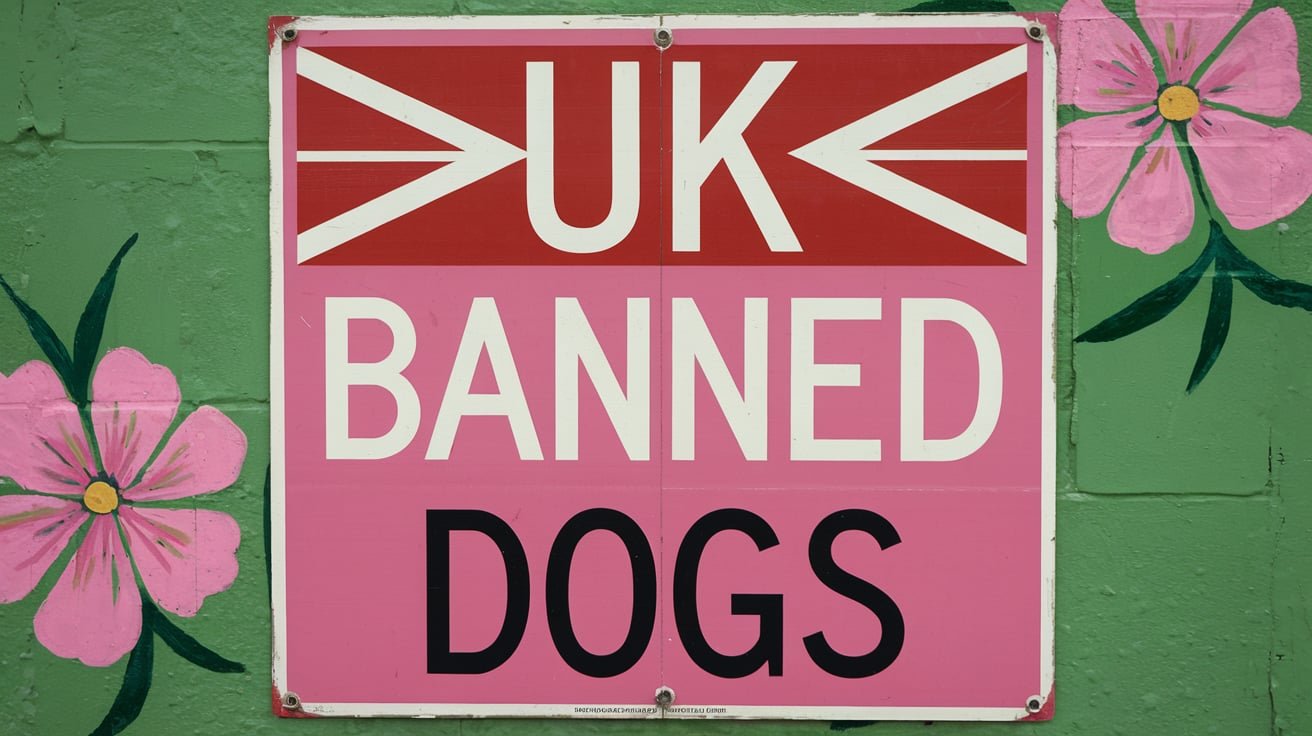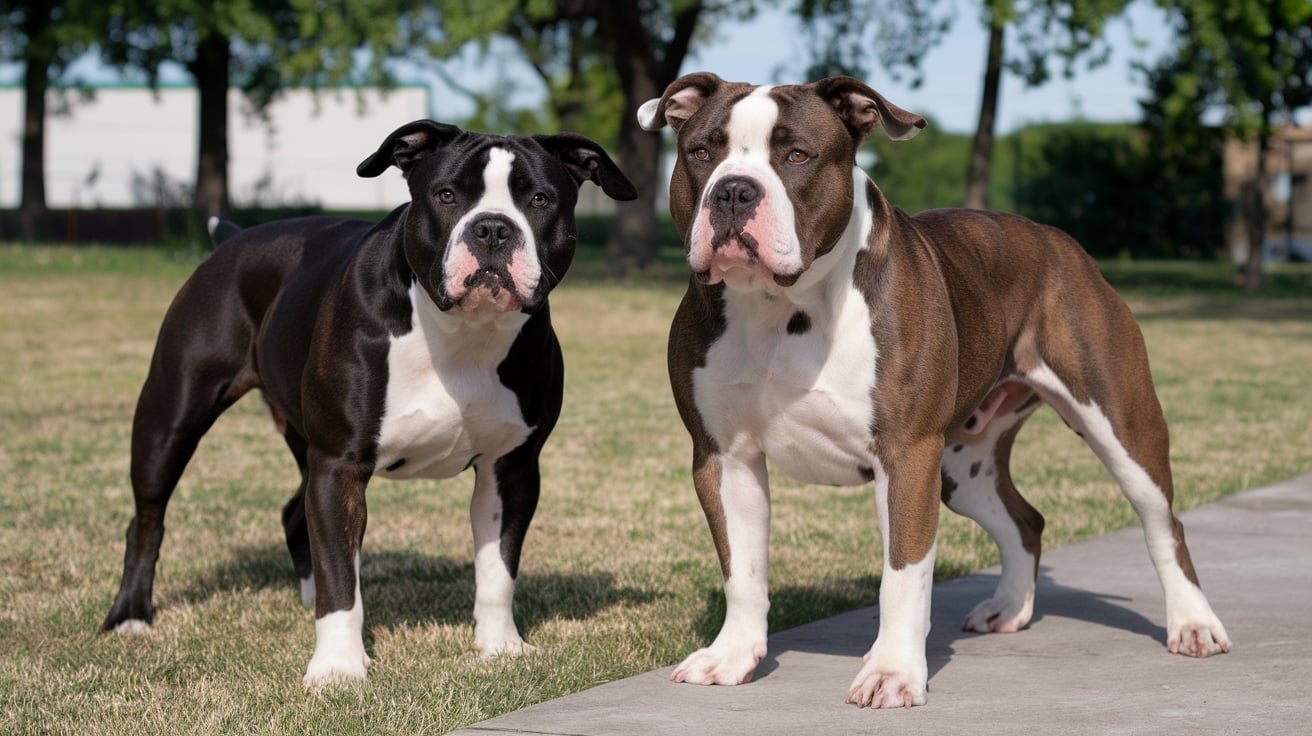Introduction To UK Banned Dogs:
Owning a dog is one of the greatest joys in life, but in the UK, not all dogs are allowed as pets. UK banned dogs refer to specific breeds that are restricted under the law. Understanding these regulations is crucial for every dog lover to ensure they stay compliant and avoid potential legal troubles.
In this article, we’ll explore the UK banned dogs, the laws surrounding them, and the reasons behind these bans. By the end, you’ll know which breeds are prohibited, how the law works, and what to do if you suspect a dog you own or plan to own falls under these restrictions.
What Are UK Banned Dogs?
The term UK banned dogs refers to specific dog breeds that are prohibited under the Dangerous Dogs Act 1991. This law was introduced to protect the public from aggressive and dangerous dogs after a series of high-profile attacks in the 1990s.
According to this act, certain breeds are deemed inherently dangerous and are banned from being owned, bred, sold, or even imported into the UK. The law is breed-specific, meaning it focuses on particular dog breeds rather than individual dogs’ behavior. However, there are some important nuances that we’ll cover later.
Anecdote: I once had a neighbor who unknowingly bought a dog that turned out to be part of a banned breed. They had no idea until a local vet informed them. It was a stressful experience, and they had to navigate the complex legal system to find a solution.
The Four Banned Dog Breeds in the UK
Currently, there are four main breeds banned under UK law:
- Pit Bull Terrier
- Japanese Tosa
- Dogo Argentino
- Fila Brasileiro
These breeds are banned because they are believed to be genetically predisposed to aggressive behavior. The law applies regardless of whether an individual dog from these breeds is well-behaved or has no history of aggression.
1. Pit Bull Terrier
The Pit Bull Terrier is probably the most well-known of the UK banned dogs. This breed was historically used in dog fighting rings, which led to its reputation for aggression. While not all Pit Bulls are dangerous, their strength, size, and temperament have made them a target of legislation.
2. Japanese Tosa
The Japanese Tosa is a large, powerful breed originally bred for dog fighting in Japan. Known for their strength and endurance, these dogs are extremely rare in the UK. However, due to their history of aggression, they remain on the UK banned dogs list.
3. Dogo Argentino
The Dogo Argentino is a muscular hunting dog from Argentina. Bred to hunt big game like wild boar and pumas, these dogs are incredibly strong. Their power, coupled with a strong prey drive, has led to their inclusion in the list of UK banned dogs.
4. Fila Brasileiro
The Fila Brasileiro, also known as the Brazilian Mastiff, is another hunting breed. Known for their fierce loyalty and protective nature, they can be aggressive towards strangers, which is why they are part of the UK banned dogs list.
Why Are These Dogs Banned in the UK?
The breeds listed as UK banned dogs are prohibited because they are considered dangerous to the public. Their physical strength, coupled with an aggressive nature (in some cases), makes them potentially harmful. The goal of the Dangerous Dogs Act 1991 is to prevent attacks on people and other animals.
Anecdote: A few years ago, a family in my neighborhood had an encounter with an aggressive dog. Though the dog wasn’t one of the UK banned dogs, it was a powerful breed. The experience was terrifying, and it made me appreciate the importance of having laws to regulate dangerous dogs.
However, not everyone agrees with breed-specific legislation. Many dog owners and animal welfare groups argue that behavior, not breed, should be the focus. After all, many well-trained dogs from strong breeds are gentle and loving family pets.
How Does the Law Work?
Under the Dangerous Dogs Act 1991, it is illegal to:
- Own a dog that is classified as one of the UK banned dogs
- Breed, sell, or give away any of these dogs
- Import or export these breeds into or from the UK
If the police or local council believe you own one of the UK banned dogs, they can seize the dog, even if it hasn’t been aggressive. This is because the law is based on breed rather than individual behavior.
The Exemption Scheme
In some cases, owners can keep a dog from one of the UK banned breeds under strict conditions.. This is known as the Index of Exempted Dogs. The owner must prove that the dog poses no threat to the public, and the dog must be kept on a lead and muzzled at all times when in public. Owners must also carry insurance and comply with regular inspections.
What to Do If You Think Your Dog Is a Banned Breed
If you suspect your dog might be one of the UK banned dogs, it’s important to take action immediately. Here’s a step-by-step guide on what to do:
1. Contact a Professional
The first step is to consult a vet or professional dog behaviorist who can help determine if your dog fits the physical characteristics of a banned breed.
2. Check with Authorities
If there’s still uncertainty, contact your local council or the police. They have the authority to make official judgments on whether a dog falls under the UK banned dogs list.
3. Seek Legal Advice
If your dog is seized, you have the right to appeal the decision. In these cases, it’s vital to seek legal advice from a solicitor who specializes in dangerous dog law.
Anecdote: A friend of mine faced a legal battle when her mixed-breed dog was wrongly identified as a Pit Bull Terrier. She fought the decision in court and was able to keep her beloved pet, but it was a long and stressful process.
4. Apply for Exemption
If your dog is part of a banned breed but poses no threat, you can apply for an exemption under the Index of Exempted Dogs. This can allow you to keep your dog under strict conditions, including mandatory use of a muzzle and lead in public.
Alternatives to Banned Breeds
While owning one of the UK banned dogs may not be possible, there are plenty of alternative breeds that make excellent pets.Many breeds share similar traits with the banned breeds but remain unrestricted under UK law.
For example:
- Staffordshire Bull Terriers are often mistaken for Pit Bulls but are legal and known for being affectionate and loyal family pets.
- Boxers share some physical similarities with the Dogo Argentino but are gentle, playful dogs that are great with children.
Anecdote: I once considered adopting a Dogo Argentino but opted for a Boxer instead. Our Boxer, Daisy, has been the most loving and playful dog I could have asked for, and she’s fantastic with kids.
Are Other Breeds Likely to Be Banned in the Future?
With ongoing discussions around dog safety and breed-specific legislation, some animal welfare groups are pushing for a revision of the Dangerous Dogs Act. No clear indication suggests that authorities will add more breeds to the UK banned dogs list, but it’s important to stay informed about potential changes in the law.
Conclusion: Understanding UK Banned Dogs
Owning a dog is a rewarding experience, but it’s essential to be aware of the legal restrictions surrounding certain breeds in the UK.The Dangerous Dogs Act 1991 prohibits the UK banned dogs to protect public safety.If you’re thinking about getting a dog, make sure to choose a breed that complies with UK law and suits your lifestyle.
Remember, owning a dog is a lifelong commitment, and choosing the right breed can ensure a harmonious and safe relationship for both you and your pet.



